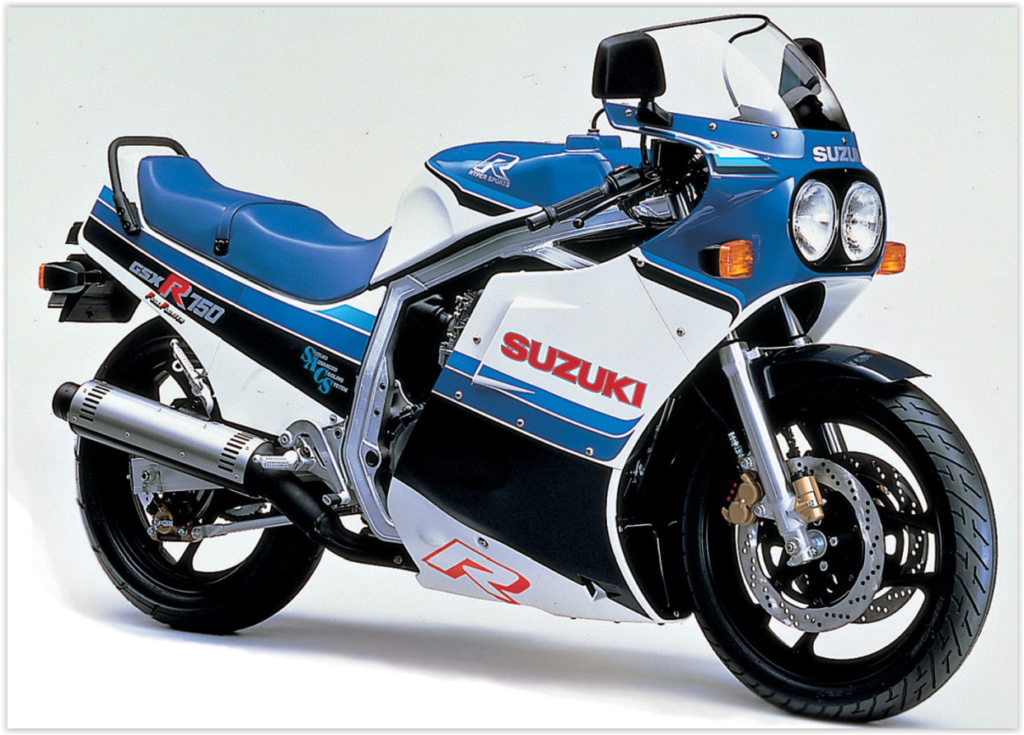
1988 – the first year of the Superbike World Championship
In the United States of America, the Superbike category has long been a cult. The 200 miles of Daytona owed its revival to this class after the two-stroke engine was over with the introduction of the superbike category in 1985. This class had become extremely popular in the AMA since the early 1980s. The most famous drivers of this national championship were Freddie Spencer and Eddie Lawson, both of whom would then cause a sensation and several titles in Grand Prix sport. In Europe there were already races like the 200 miles of Imola, at which four-stroke superbikes became increasingly popular on the old continent after the Formula 750 World Championship was buried in the late 1970s.

The introduction of the Superbike World Championship
At the request of the Japanese manufacturers, the Europeans followed suit for the 1988 season, and with the Superbike World Championship, a category was created for near-series bikes up to 750cc with four-cylinder four-stroke engines. Two-cylinder engines up to 1000cc were approved for this. 16 years later, the displacement limit was also adjusted to one liter for 4-cylinder engines. This of course led to problems for the V2 engines from Ducati and Aprilia with the famous RSV Mille and the RSV 1000R to keep up with these regulations. Since 2008, the two-cylinder engines can therefore have a displacement of up to 1200cc. Nevertheless, KTM never entered the WSBK as factory team and Ducati came with the Panigale V4R in 2019, which means that since then no V2 units have appeared in the near-series World Championship.
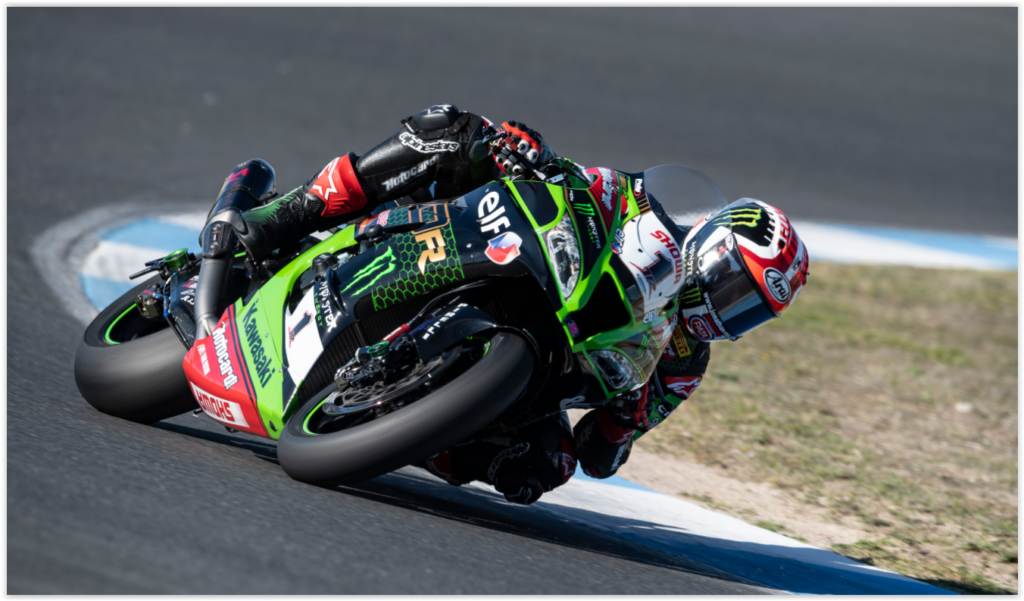
The Founder of the WorldSBK
The US-American ex-racing driver Steve McLaughlin was, in cooperation with the FIM, the man who founded this successful racing series and in 1988 held the event rights. The Californian from Santa Ana was US runner-up in the Superbike Championship in 1976.

The questionable mode at the beginning and the later changes
From the beginning, the concept of this World Cup was that the overall winner would be determined in two runs. In the beginning, the results were even added up, but after the first event one counting method per run prevailed. First with half points per race and from 1989 the winner received 20 points. Second place went to their 17th and third place was credited with 15 points. The rest of the counting corresponded to the principle as it is today. From 1995 onwards, the method, unchanged since then, came into play, as it has been in the motorcycle world championship since 1993 (since 2002 MotoGP with four-stroke engines instead of the 500cc two-stroke). Since 2016 there has also been a new format with one race on Saturday and the second on Sunday afternoon.

The Superpole Race – only from 2019
Only in the 32nd year came an additional race in which half points are awarded over 10 laps on Sunday morning. In the Superpole Race, however, only the best 9 drivers receive championship points. Since then, this order has also determined the starting grid for the 2nd race. Before that, the 9 best drivers of the first run always had to start in the reverse order of their finish for the second race. A very questionable handicap formula that was never used in the motorcycle world championship and MotoGP and was luckily abandoned after 2018. The following are the statistics of the Superpole Race winners for the first 2 years since the introduction of sprint racing (2019 to 2020), with a clear and unsurprising dominator.
| Rider | SP-Race | Race | Total |
| Jonathan Rea | 11 | 88 | 99 |
| Alvaro Bautista | 5 | 11 | 16 |
| Toprak Razgatlioglu | 2 | 3 | 5 |
| Scott Redding | 1 | 4 | 5 |

Calendar of the first Superbike World Championship in 1988
At the premiere there were only 9 rounds and the choice of venues was quite exotic. After all, three races took place overseas and one behind the “iron curtain” at the gates of the Danube city of Budapest. The early date for the season opener at Donington Park was chosen quite optimistically, as the temperatures in England at the beginning of April are often less than ideal. One can also imagine how the long journeys to Japan, Australia and New Zealand have deterred some private drivers. However, this World Cup was primarily introduced at the request of the Japanese plants.

Entry List Superbike Donington 1988
As you can see from the official list, all brands of rank and name were represented, as well as numerous top drivers of the time. It was just as unnecessary to introduce Joey Dunlop in the 80s as, for example, Virginio Ferrari. They were racing idols of their time, but to be on the safe side, here are the Italians most important successes:
1978 – Italian 500cc champion on Suzuki
1978 – Italian 750cc champion on a Yamaha
1979 – 500 cc vice world champion in a Suzuki
1985 – Italian F1 champion in a Ducati 750 F1
1987 – TT-F1 world champion in a Bimota YB4 R.

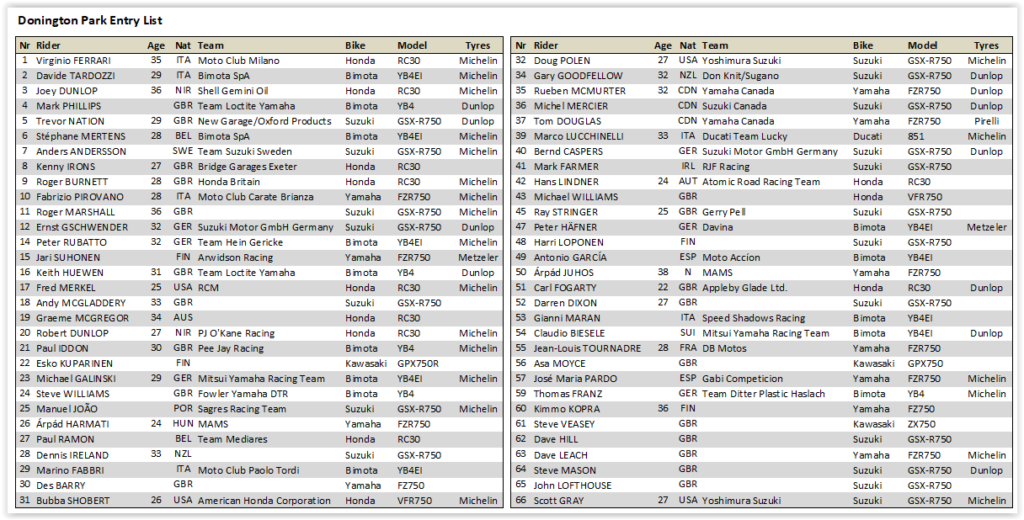
Long list of well-known names
Other illustrious names such as Marco Lucchinelli, Davide Tardozzi, Stéphane Mertens, Robert Dunlop, Fabrizio Pirovano and many other at least nationally well-known names graced Donington’s entry list. In addition, with the three-time AMA Superbike champions Fred Merkel, Bubba Shobert and Doug Polen top riders from the USA. As the icing on the cake, strong drivers from Australia and New Zealand also competed, some of them only at the races in their region, which was especially true for the Japanese participants.


Numerous importers showed exemplary commitment
The long list of participating teams also underlines how many national importers were involved in top-class racing at the time. Today, you almost cry when you take a closer look at this broad commitment. From a German point of view in particular, it was simply sensational how broadly based the representation was compared to today at this time. A driver of the format of Markus Reiterberger, Sandro Cortese, Jonas Folger or Philipp Öttl would definitely have been spoiled for choice back then.
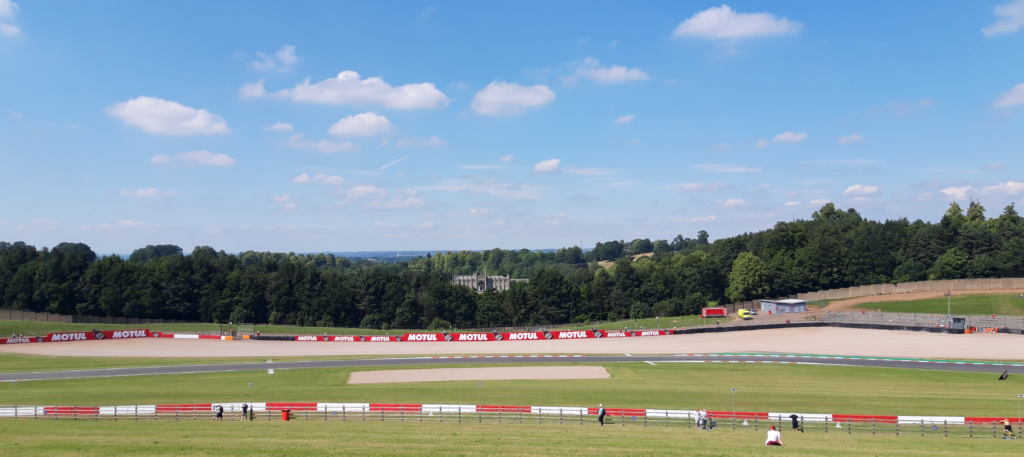
The start of the season of the first Superbike World Championship

Opening winner Tardozzi makes history, but misses world championship points
The first round of the Superbike World Championship was held on April 3, 1988 in Donington. Davide Tardozzi won this race in a Bimota ahead of Marco Lucchinelli (Ducati) and TT legend Joey Dunlop (Honda). Lucchinelli won the second run, while Tardozzi fell one lap before the end and then the laps and times were added. The rider who was later much more successful as Ducati team boss was thrown out of the ranking, which of course was total nonsense.

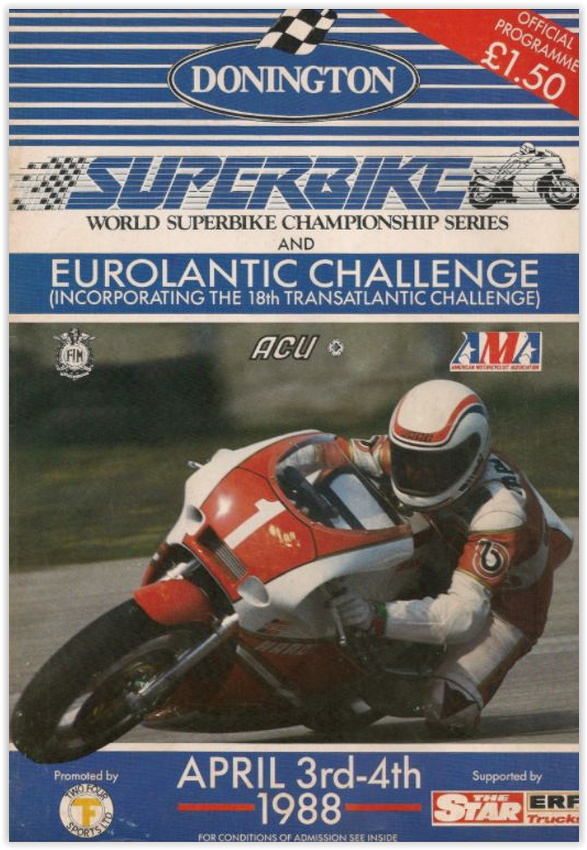

Many dnf”s shaped the series and season opener in England
A total of 10 drivers did not see the checkered flag in the first race, 6 of them due to a fall. As a result, for example, the Canadian Michel Mercier (Suzuki), in tenth place, lost his championship points in the first race due to his crash 19 laps before the end. Just like his compatriot Rueben McMurter (Yamaha), who missed the checkered flag for only one lap, after P13 in the first run.


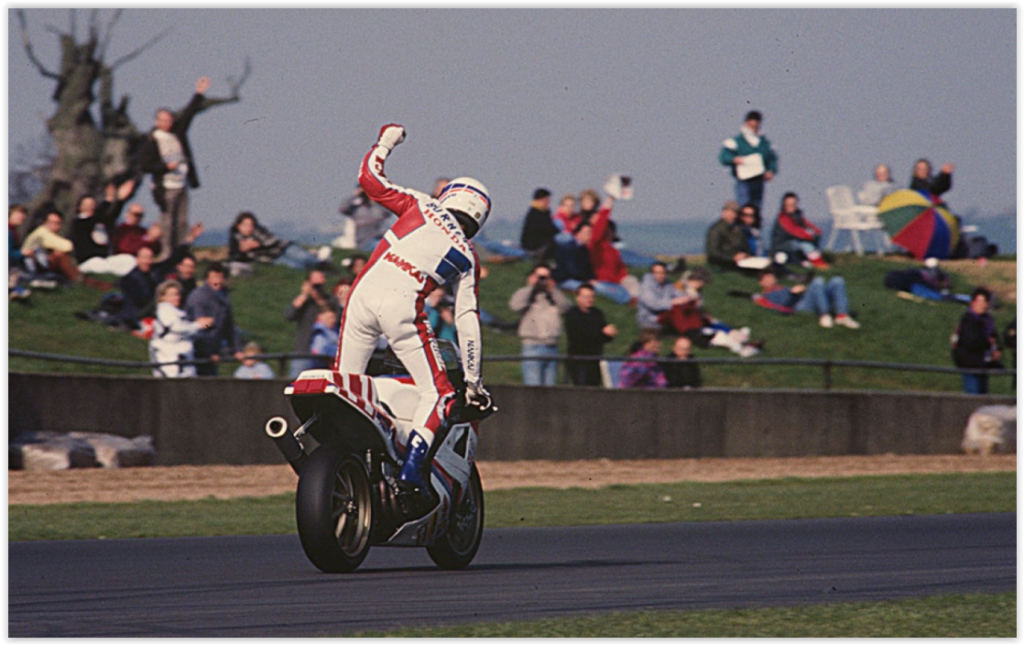
Improved regulations for the second round
Of course, such a questionable and unjust regulation could not be continued. Therefore, the runs were rated individually from the second round of the World Cup, but with half points in the first year. Of course, this was also quite nonsense, which is why every run was counted in full from 1989 onwards.
Changes to the regulations in detail:
– The first round (Donington) was contested in two rounds, which resulted in a cumulative classification.
Scale: 20, 17, 15, 13, 11, 10, 9, 8, 7, 6, 5, 4, 3, 2, 1.
– The French event was reduced to a single lap due to a busy schedule.
Scale: 20, 17, 15, 13, 11, 10, 9.8, 7, 6, 5, 4, 3, 2, 1.
– The other events, which are played in two rounds, mean that separate points are awarded for each round.
Scale: 10, 8.5, 7.5, 6.5, 5.5, 5.4.5, 4, 3.5, 3, 2.5, 2, 1.5, 1, 0.5.

The 2nd round of the World Championship on the Hungaroring

It continued with round 2 on the Hungaroring near Budapest. Donington’s second overall Fred Merkel on the Honda RC30 shared a race win with Adrien Morillas on a Kawasaki. Thanks to a fourth place in the first race, the French also had overall victory ahead of Davide Tardozzi, Stéphane Mertens (both Bimota) and US-Boy Merkel. Below are the first 20 of the 1st run on the Hungaroring.



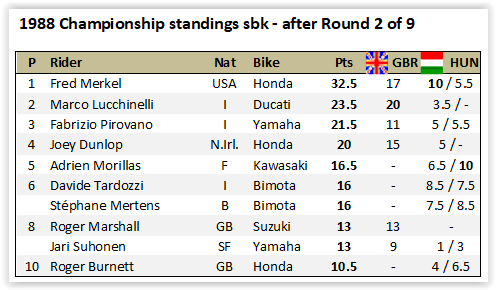

World Championship round 3 at the Hockenheimring
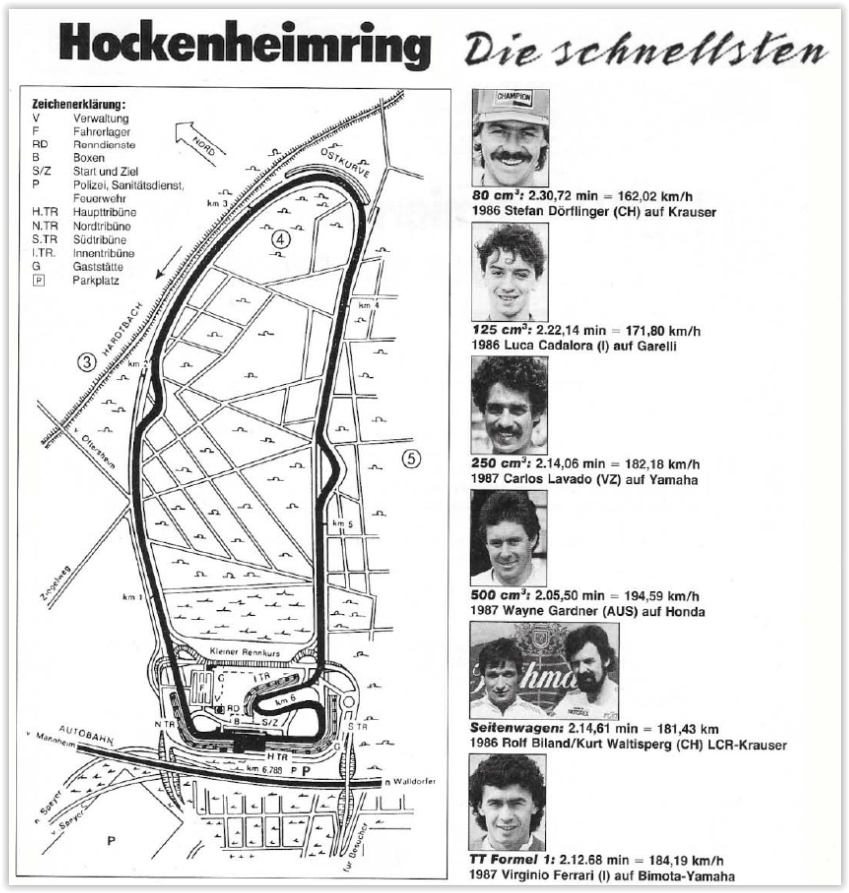
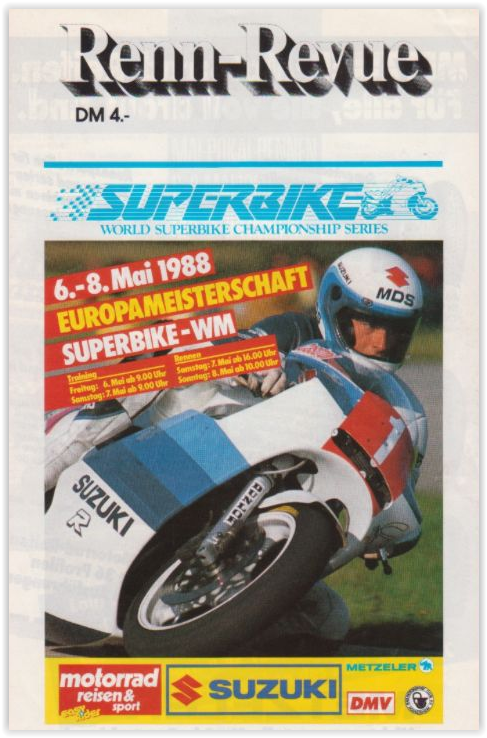
No luck for the world championship leader
Fred Merkel traveled to Hockenheim as world championship leader, but the sunnyboy from California had to be content with P17 in the first race and crashed one lap in the second run. The big hour came for Davide Tardozzi on the Bimota, who was piloting one of the best chassis, combined with one of the best engines of the time. It was the phenomenal motor of the Yamaha FZR-750, with 5 valves per cylinder. The top positions in the 1st run were very international. Behind the Italian, the Frenchman Bouhene was second ahead of the Portuguese Vieira on P3. Fourth was the Swiss Weibel ahead of the Englishman Burnett in fifth and as sixth the Northern Irishman Joey Dunlop, one of the most important legends of the TT.






The 4th round in Austria
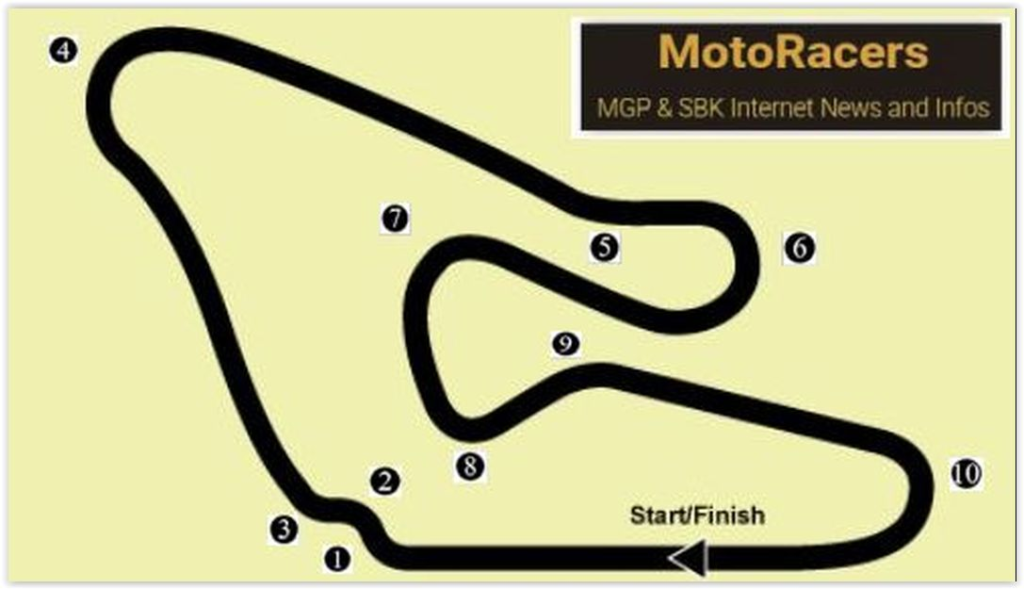
1988 still under the name Österreichring and better than today
The Österreichring near Spielberg was a paradise track back then. No comparison with the angular layout, which makes today’s Red Bull Ring one of the most controversial MotoGP circuits. With three pure full-throttle stages separated by narrow corners since the last renovation in 2011 and only one really interesting fourth part with smoother corners, some things were made worse. The average speed at that time was just under 180 km / h, but at least a little below the Hockenheimring at that time.

Italian winners in the Austrian race
The two race wins were shared by the former 500 cc star Marco Lucchinelli (Ducati 851) and Davide Tardozzi on the Bimota YB4. US boy Fred Merkel crashed on the first lap in race 1 and did not get past 8th place in race 2. The conditions were a little more difficult in the second run because it had gotten wet and the track wasn’t completely dry.


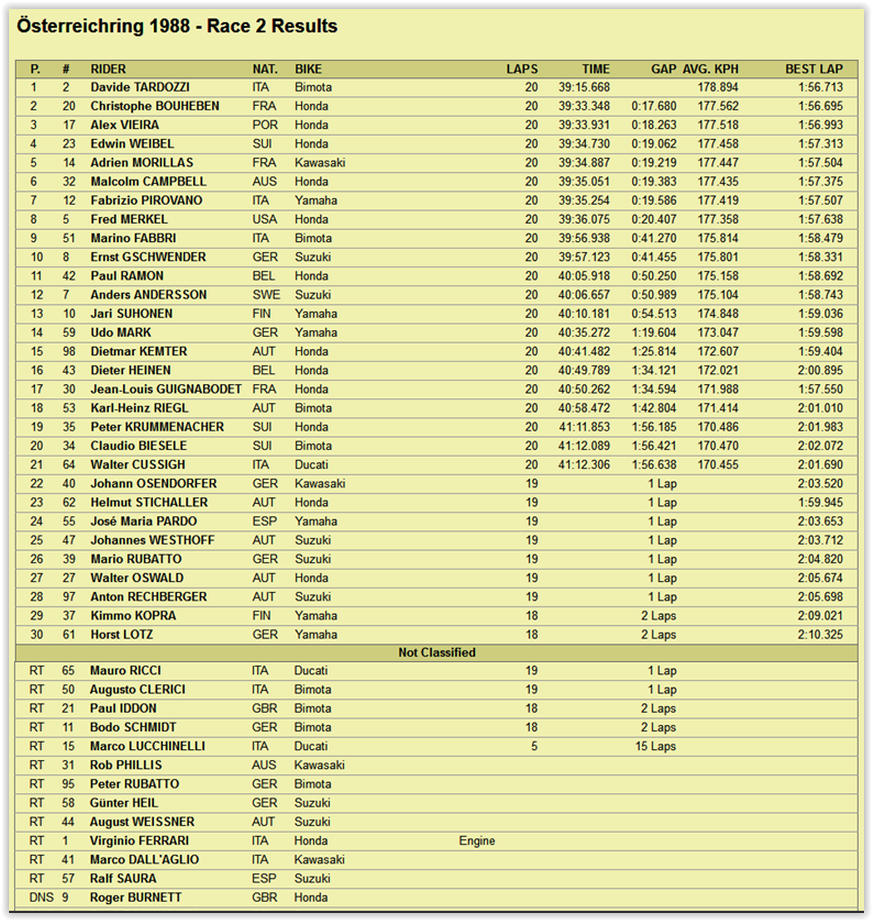
Tardozzi with a clear lead shortly before the middle of the season
The young man from Ravenna had increased his lead in the World Championship with his third race win of the season and a 5th place in the first run and Lucchinelli was now level on points with Pirovano in 2nd place. Fred Merkel, however, was now up after his original World Championship lead the 4th intermediate rank slipped. But there were still 5 events pending and therefore many postponements were still possible.

The journey for World Cup round 5 in Sugo (Japan)
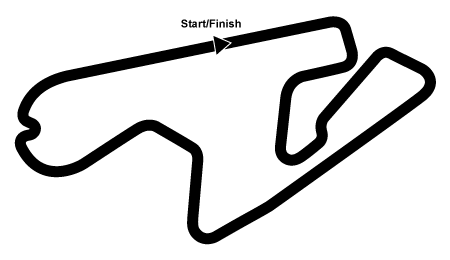
Many local pilots put themselves in the limelight at the event in Sugo, Japan. The track was damp when the first run started, but it was drying out. The Canadian Gary Goodfellow brought a first victory for a Suzuki in the newly launched WorldSBK in the first race. Fred Merkel came second on his Honda in front of another Suzuki from the Japanese Oshima, Mertens (Bimota) and another local hero named Watanabe on the best Yamaha.
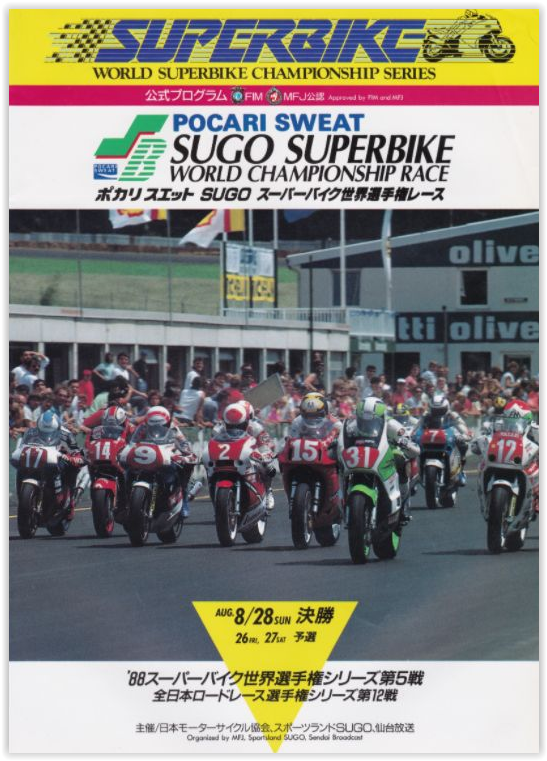
Australian Rob Phillis finished sixth ahead of a young New Zealander. His name is Aaron Slight and his name should appear on the results sheets for many years to come. Because Tardozzi and Pirovano had crashed and Lucchinelli was only twelfth behind the many wildcard pilots, Merkel was able to regain significant ground on the leaders in the World Championship.

The second race with an interesting winner
An Australian named Michael Doohan won race two on a Yamaha. Wait a minute, wasn’t there something? Right, under the first name Mick the young man from Down Under was to put his stamp on the Honda of the 500 cc motorcycle world championship a few years later. Tardozzi stayed seated this time and finished fourth behind the Japanese Iwahashi and the New Zealander Goodfellow. Pirovano also saw the checkered flag, but only in 10th place, right in front of Merkel. This time, however, Marco Lucchinelli fell.

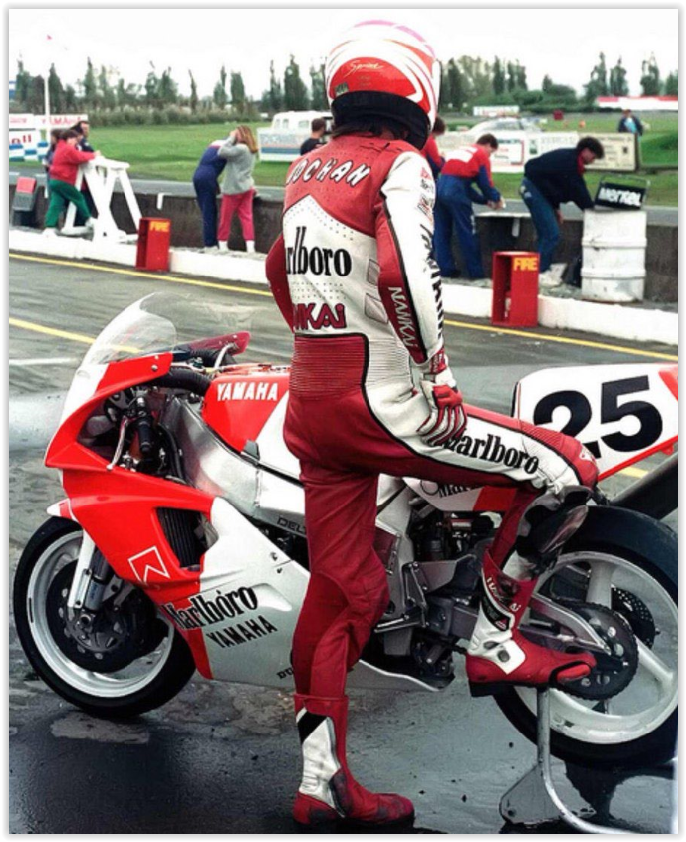


2nd half of the year: http://www.motoracers.eu/wsbk-history-part-2/?lang=en

No Comments Yet